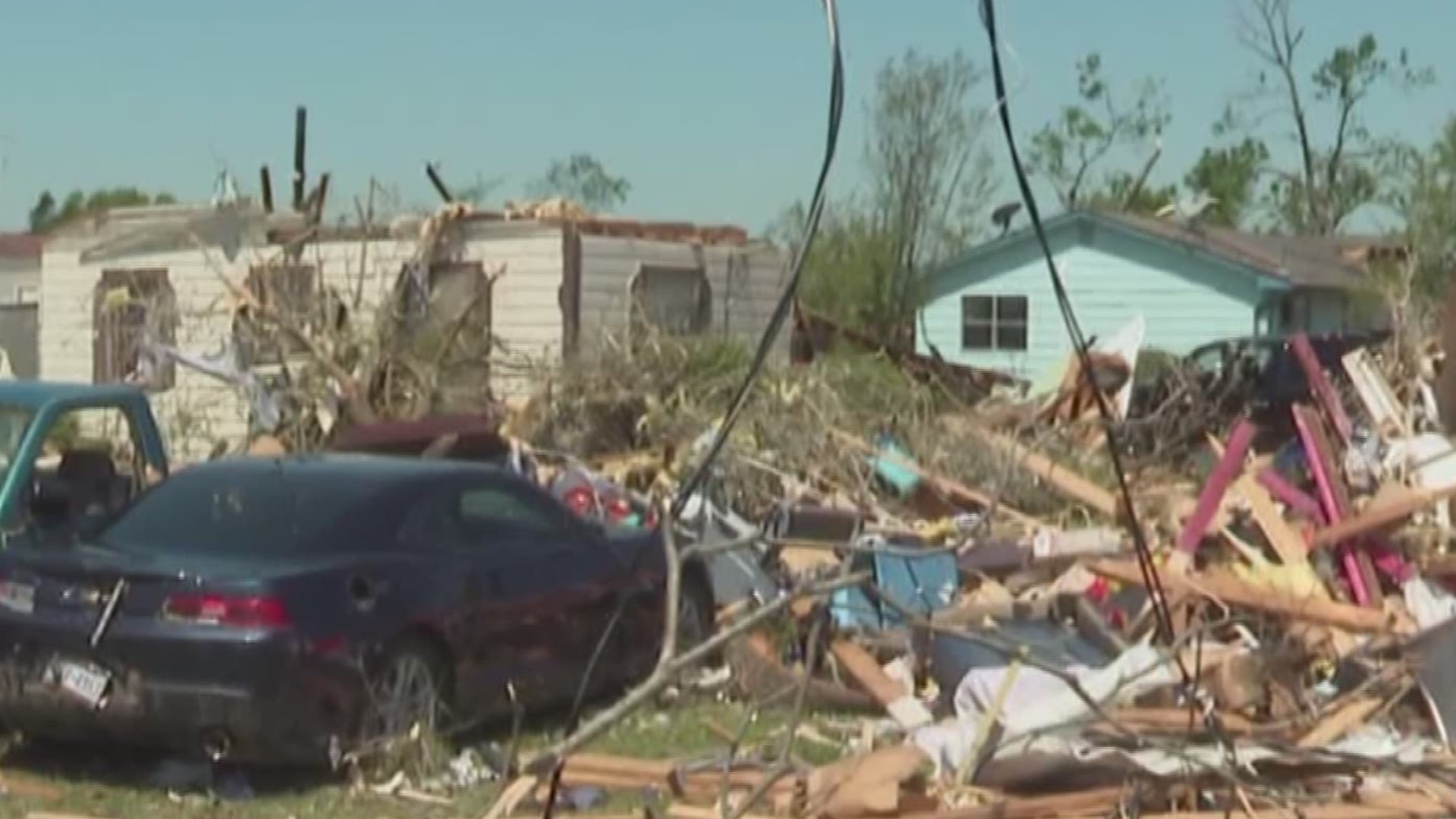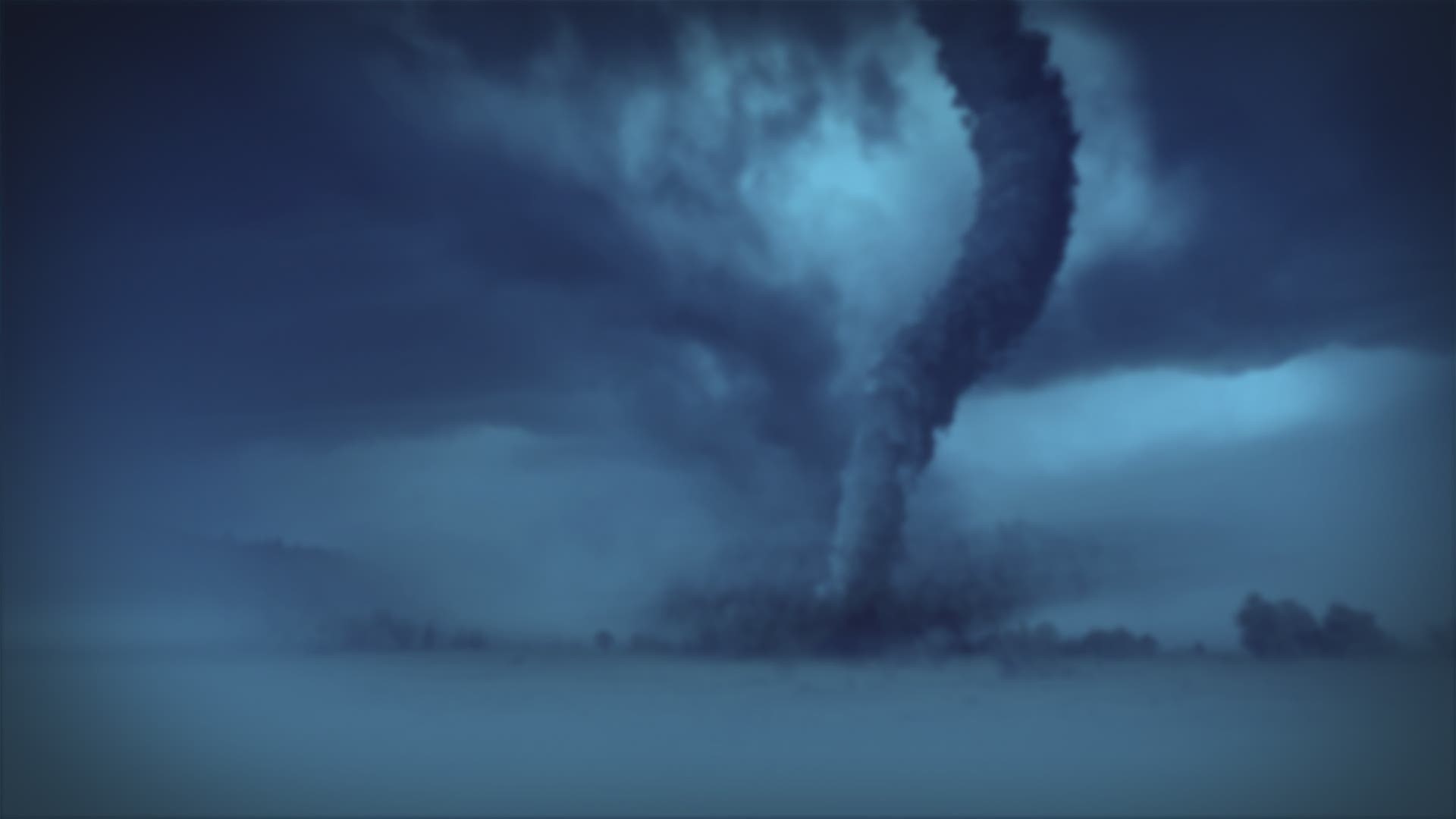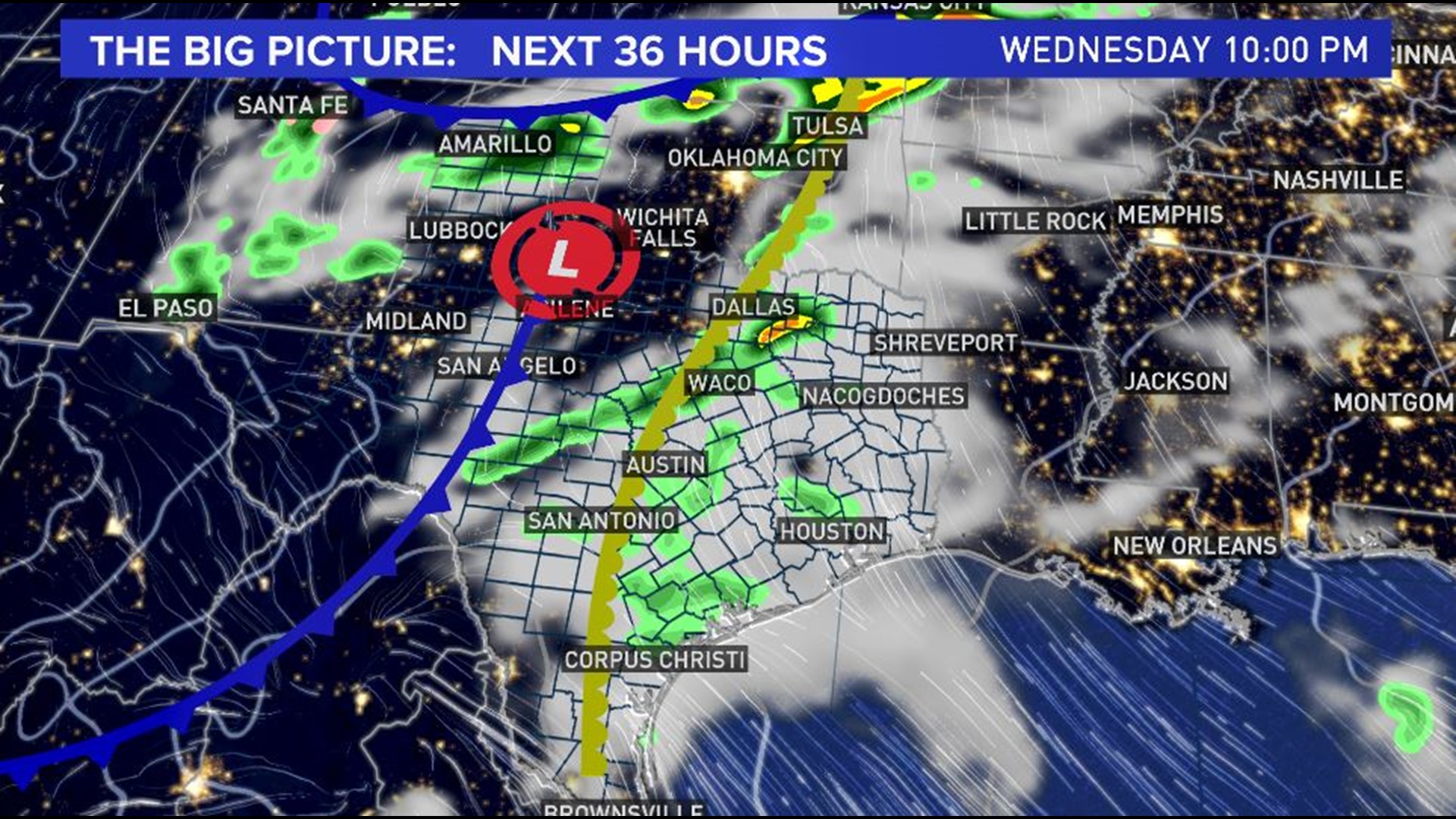TEMPLE, Texas — KCEN Channel 6 wants to make sure you stay safe and on top of the latest weather alerts as we're expecting severe weather.
There are a few things you should do now to prepare.
►Latest KCEN Weather Warriors Updates | Latest Forecast
Charge Your Tech Devices
With severe weather, there's always the possibility of power outages. Plan ahead and get your phones, laptops, and tablets charged up now. The more options you have when the power goes out, the longer you'll be able to keep in touch.

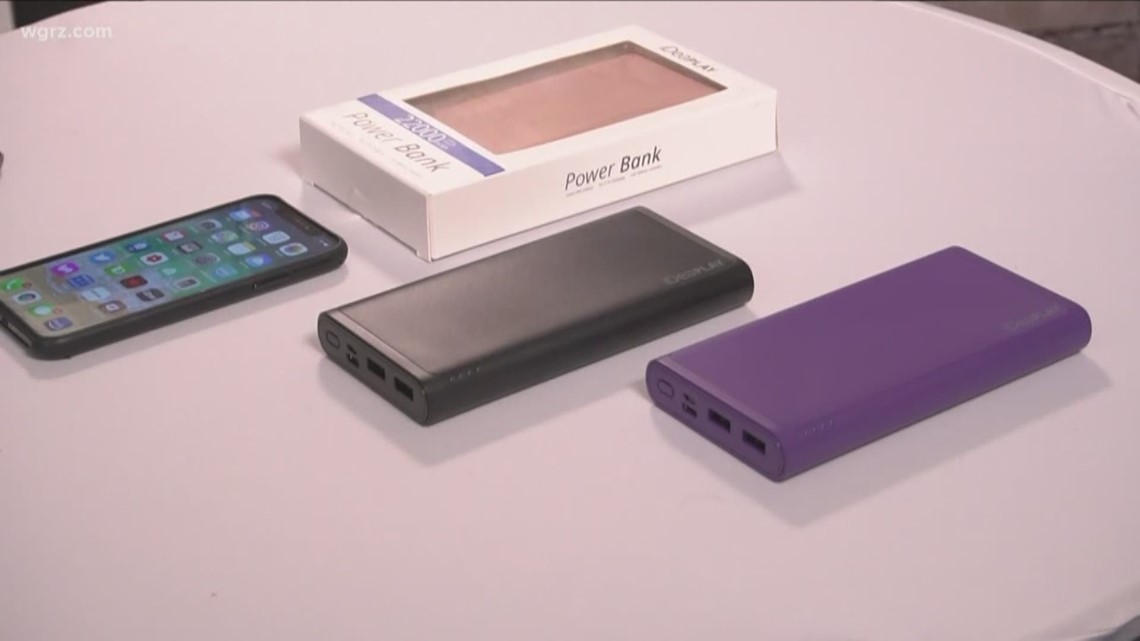
Emergency Contacts
Program all your emergency contact numbers and email addresses into your mobile phone. It's important to include the police department, fire station and hospital, as well as family members.
Download KCEN Channel 6 News Apps
If your power or cable goes out, you'll still be able to connect online. Download the KCEN Channel 6 News App for live streaming video, updated weather forecasts, and reports from our field crews.
KCEN6 | For Apple Devices
KCEN6 | For Android Devices
Be sure to check the county where you live and work, so you'll get alerts in your area. Consider leaving your phone near your bed so you'll be able to hear alerts headed for you overnight.
Twitter vs. Facebook
Don't depend solely on Facebook to deliver timely weather alerts. Facebook uses an algorithm to determine what shows up in your newsfeed. Every post does not show up in your feed even if you've liked a page. You will miss important posts if you only depend on seeing them through Facebook. Twitter, on the other hand, will show every single post from a source you're following. Be sure to double-check timestamps on tweets and posts. People will often share information about weather warnings even after they've expired.
Severe Weather Radio
A severe weather radio can mean the difference between life and death in a storm. They're rather inexpensive, most around $30-$40.

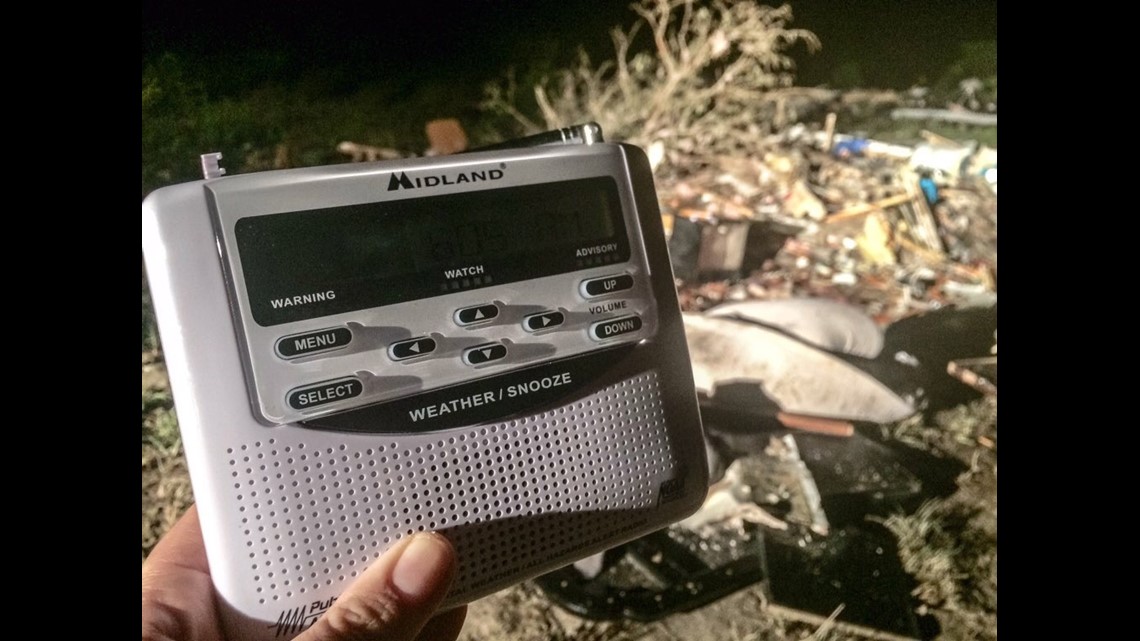
Share Storm Videos And Photos
Join the KCEN Weather Warrior Team: When it's safe (and ONLY when it's safe!), your reports help us see what's happening in every corner of our coverage area. Send photos and videos to news@kcentv.com.
Also, post pictures on the KCEN News Facebook page and like the page for updates. Tag us on your Twitter Post @KCENNews using #KCEN #CenTXWX and #WeatherWarriors6.
Follow the team on Twitter
What is a Tornado Watch?
A Tornado Watch means that conditions are favorable for tornado development. People located in and around the watch area should keep an eye toward the sky and listen to their NOAA weather radio or tune to WFMY News 2 for further weather information.
What is a Tornado Warning?
A Tornado Warning means that a tornado has been detected by the National Weather Service Doppler radar or a reliable report of a tornado has been reported from the field. A tornado warning is usually issued for portions of one or two counties for an hour or less. The storm could also produce large hail and destructive straight-line winds. If the tornado warning includes your neighborhood or workplace, you should seek safe shelter immediately.
Tornado Safety
In the case of a tornado warning, here are some tips for staying safe depending on where you are when the storm hits.
House/Stand-alone building:
- Get to the lowest level possible
- Go to an area with as many walls between you as possible
- Get in a bathtub or interior closet

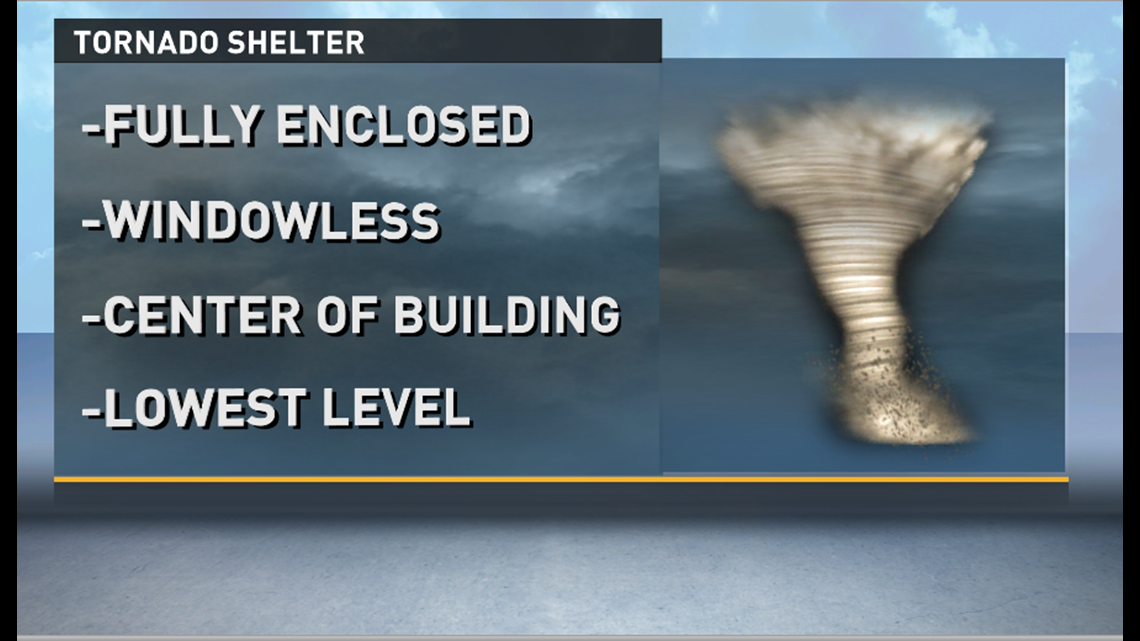
Mobile Home:
- Get out of the mobile home and get in a sturdy building if possible
- Get out of the mobile home and hunker in a ditch
- If no ditch or building is nearby, plan ahead and get to a sturdy building ahead of time.
Apartment:
- Get to the lowest level (go to a neighbor's apartment on the first floor)
- Regardless of what floor you're on, get in a bathtub or interior closet
- If you are on a higher level and can't get to a lower apartment, hunker down in the breezeway of the apartment building
Car:
- If possible, pull over, park, get inside a building and out of the storm
- If you have to stay in your car, try to find a ditch to park in and use your emergency brake
- DO NOT park under a bridge or overpass
Miscellaneous Tips for Keeping Safe in a Tornado:
- Cover yourself with a mattress, sleeping bags, or pillows
- Wear a helmet to protect your head
- Hunker down as much as possible
Flood Safety
- If flash flooding is a risk in your location, then monitor potential signs, such as heavy rain.
- Remember to TURN AROUND, DON’T DROWN!
- If told to evacuate, do so immediately. Never drive around barricades. Local responders use them to safely direct traffic out of flooded areas.
- If your vehicle is trapped in rapidly moving water, then stay inside. If water is rising inside the vehicle, then seek refuge on the roof.
- If trapped in a building, then go to its highest level. Do not climb into a closed attic. You may become trapped by rising floodwater. Go on the roof only if necessary. Once there, signal for help.
- Stay away from high water, storm drains, ditches, ravines, or culverts
- 12 inches of water can carry away a small car
- More than half of ALL flood-related drownings occur when a vehicle is driven into flood waters
- Many flash flood deaths occur at night
- 6 inches of fast moving water can knock you off your feet
- It takes only 2 feet of water to float away most vehicles
- Never walk through flood waters
- If you’re trapped by moving water move to the highest point and call 911
- If line markings on the road are not visible, DO NOT drive through the water
- Avoid driving through pools of standing water.
Power Line Safety
Safety Stay away from power lines that have fallen or are sagging during a storm. Consider all lines energized as well as trees or limbs in contact with lines. Report downed power lines to your local power company and to your police department.
If a power line falls across a car that you're in, stay in the car. If you MUST get out of the car due to a fire or other immediate life-threatening situation, do your best to jump clear of the car and land on both feet. Be sure that no part of your body is touching the car when your feet touch the ground.
► POWER OUTAGES CHECK | Oncor Outage Map
► REPORTING OUTAGES | TXU Energy
Generator Safety
You need to be especially careful during power outages, as the risk of carbon monoxide (CO) poisoning and fire increase. Here’s how you can keep your family safe:
- Use portable gas generators safely. Read the label on your generator and the owner’s manual before a storm hits.
- If you lose power, use your generator OUTSIDE your house ONLY, at least 20 feet from your home.
- NEVER use a generator inside a home, garage or shed. Carbon monoxide from generators is poisonous and can KILL you in minutes. CO is called the “invisible killer” because you cannot see it or smell it.
- Make sure you have working CO alarms in your home. They should be placed outside separate sleeping areas and on each floor of your home.
- Make sure you have working smoke alarms too. Check the batteries! They should be placed on every level of your home, outside sleeping areas and inside each bedroom.
What to do After a Tornado
Tips provided by Ready.gov
- If you are trapped, do not move about or kick up dust. Tap on a pipe or wall or use a whistle, if you have one, so that rescuers can locate you.
- Listen to local officials for updates and instructions.
- Check-in with family and friends by texting or using social media.
- Watch out for debris and downed power lines.
- Stay out of damaged buildings and homes until local authorities indicate it is safe.
- Use extreme caution during post-disaster clean-up of buildings and around debris. Do not attempt to remove heavy debris by yourself. Wear protective clothing, including a long-sleeved shirt, long pants, work gloves, and sturdy, thick-soled shoes during clean-up.
- Photograph the damage to your property in order to assist in filing an insurance claim.
- Do what you can to prevent further damage to your property, (e.g., putting a tarp on a damaged roof), as insurance may not cover additional damage that occurs after the storm.
- If your home is without power, use flashlights or battery-powered lanterns rather than candles to prevent accidental fires.
(WFMY contribute to this report)
Other weather stories on KCENTV.com:

